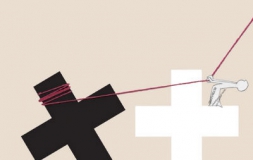What is WHO?
WHO is the leading body of the UN on global health issues. Its activities include: shaping the health research agenda, setting international standards, collecting quantitative data, providing technical support to countries, and monitoring health trends.
The World Health Assembly is the decision-making body of WHO. It meets once a year and is attended by delegations from all of WHO's 194 Member States. Its main function is to determine the organisation’s policies.
Children and WHO
WHO has various children’s programmes, including:
WHO also has a strong focus on violence prevention, in particular violence against children, as part of its broader work in preventing non-communicable diseases.
WHO and the UN Study on Violence against Children
WHO was one of the coordinating agencies, along with OHCHR and UNICEF, of the UN Study on Violence against Children, which was presented to the UN General Assembly in October 2006. The idea of the Study was to explore all forms of everyday violence against children in five settings: the home, schools, communities, care and justice institutions, and the work place, with the aim of making recommendations to put an end to violence against children.
WHO focuses on violence against children for two reasons. Firstly, as a public health issue. In the UN Study on Violence, for example, WHO statistics indicate that:
- nearly 53,000 children are murdered each year;
- the prevalence of forced sexual intercourse and other forms of sexual violence involving touch, among boys and girls under 18, is 73 million (or 7%) and 150 million (or 14%), respectively.
Secondly, violence against children is a major risk factor for psychiatric disorders and suicide which can result in depression, anxiety disorders, smoking, alcohol and drug abuse, aggression and violence towards others, risky sexual behaviours and post traumatic stress disorders.
WHO’s follow up activities to the UN Study on Violence against Children
- Through its 2002 World Report on Violence and Health (WRVH), WHO has encouraged governments to address violence as a public health priority. Fifteen countries have published or are preparing national reports on violence and health. In addition, over 100 countries have appointed violence prevention focal people in their Ministry of Health.
- WHO has assisted nearly almost 40 countries in the past 18 months in violence prevention activities, including data collection, research on the costs of violence, prevention programme evaluation, the establishment of national prevention institutes or task forces, and the improvement of victim services.
- WHO plans to help put into practice the recommendations of the World Report on Violence and Health by supporting countries to collect data and information related to violence against children, develop national violence prevention policies, build the capacity of health professionals to address violence, and create systems for the provision of appropriate medico-legal services and emergency trauma care.
- WHO has developed, in cooperation with the International Society for the Prevention of Child Abuse and Neglect, Preventing Child Maltreatment: A guide for taking action and generating evidence. This guide is intended to assist countries to:
- design and deliver programmes for the prevention of child maltreatment by parents and caregivers
- provides technical advice for professionals working in governments, research institutes and NGOs on how to measure the extent of child maltreatment and its consequences
- provide advice on how to design, implement and evaluate prevention programmes and services so that they show evidence of their effectiveness.
Other WHO resources for the Study follow-up:
- Guidelines for medico-legal care for victims of sexual violence, a clinical guideline that includes a chapter on managing child sexual abuse;
- TEACH-VIP, a course designed to train government personnel, violence and injury prevention practitioners, injury response service providers and students in public health and nursing science on how to prevent violence and injuries. The course includes special modules on child maltreatment and youth violence.
- Developing national policies to prevent violence and injuries, a guideline to assist policy-makers and planners with formulating national policies.
- Guidelines for essential trauma care and Prehospital care systems, which together provide guidance for ensuring optimal care of injured patients--an essential component of reducing the number of violent deaths of adolescents in particular.
Further information

